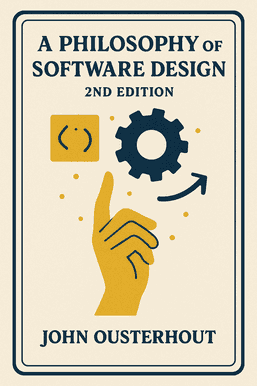What is
Algorithms + Data Structures = Programs about?
Algorithms + Data Structures = Programs by Niklaus Wirth is a foundational 1976 computer science book that explores the symbiotic relationship between algorithms and data structures. It emphasizes how their design directly impacts program efficiency, with chapters covering sorting, recursion, dynamic structures, and compiler design. While examples use Pascal and Modula-2, the core principles remain vital for understanding computational problem-solving.
Who should read
Algorithms + Data Structures = Programs?
This book is ideal for computer science students, educators, and developers seeking a deep understanding of algorithmic principles. Its structured approach benefits those studying programming fundamentals, though readers should be comfortable with mathematical reasoning. Professionals interested in historical programming methodologies or compiler design will also find value.
Is
Algorithms + Data Structures = Programs worth reading today?
Yes, despite its older programming examples, the book’s focus on timeless concepts like structured programming and algorithmic efficiency makes it relevant. Reviews praise Wirth’s clarity in explaining complex topics, and its influence persists in modern CS education and language design (e.g., Turbo Pascal).
What programming languages are used in the book?
The original edition uses Pascal, while later versions adopt Modula-2. These languages reflect Wirth’s focus on structured programming and his role in their creation. The book’s "Tiny Pascal" compiler example directly inspired Anders Hejlsberg’s Turbo Pascal.
How does the book approach recursion?
Wirth dedicates a chapter to recursive algorithms, illustrating their role in solving problems like tree traversals and divide-and-conquer strategies. He emphasizes mathematical rigor and provides iterative alternatives, showcasing trade-offs between elegance and performance.
What sorting algorithms are covered?
Chapter 2 analyzes multiple sorting methods, including selection sort and quicksort. Wirth compares their computational complexity and practical implementation, using mathematical analysis to highlight efficiency trade-offs.
Does the book discuss compiler design?
Yes, Chapter 5 explores language structures and compilers, including a step-by-step walkthrough of building a Pascal-like compiler. This section demonstrates applying algorithms and data structures to real-world systems programming.
How does Wirth emphasize the algorithm-data structure relationship?
The core thesis states that algorithms and data structures are interdependent—efficient algorithms require tailored data structures, and vice versa. Examples like search algorithms for sorted lists reinforce this duality.
What are the main criticisms of the book?
Critics note outdated language examples (Pascal/Modula-2) and limited coverage of modern paradigms like object-oriented programming. However, these are offset by the book’s enduring conceptual clarity.
How does it compare to Knuth’s
The Art of Computer Programming?
Wirth’s work is more accessible for beginners, using higher-level languages instead of Knuth’s assembly-focused MIX. It prioritizes practical implementation over exhaustive mathematical treatment, making it a complementary resource.
What real-world applications are demonstrated?
The book includes case studies like expression evaluation, memory management for dynamic structures, and compiler construction. These examples link theory to systems programming challenges still relevant today.
Why is this book still relevant in 2025?
Its focus on algorithmic thinking transcends specific technologies, providing a framework for tackling modern problems like AI optimization and distributed systems. Wirth’s principles underpin contemporary languages and tools, ensuring ongoing applicability.














